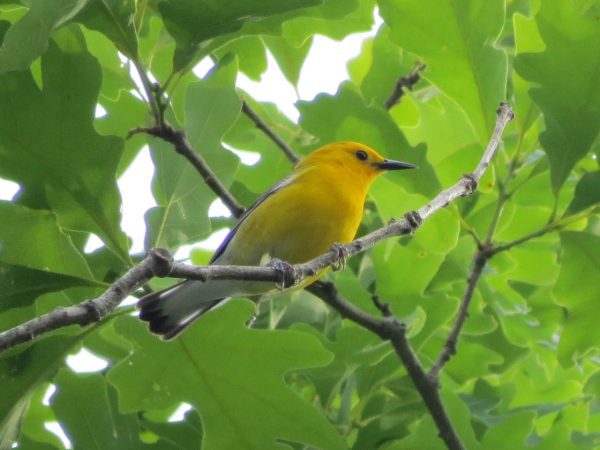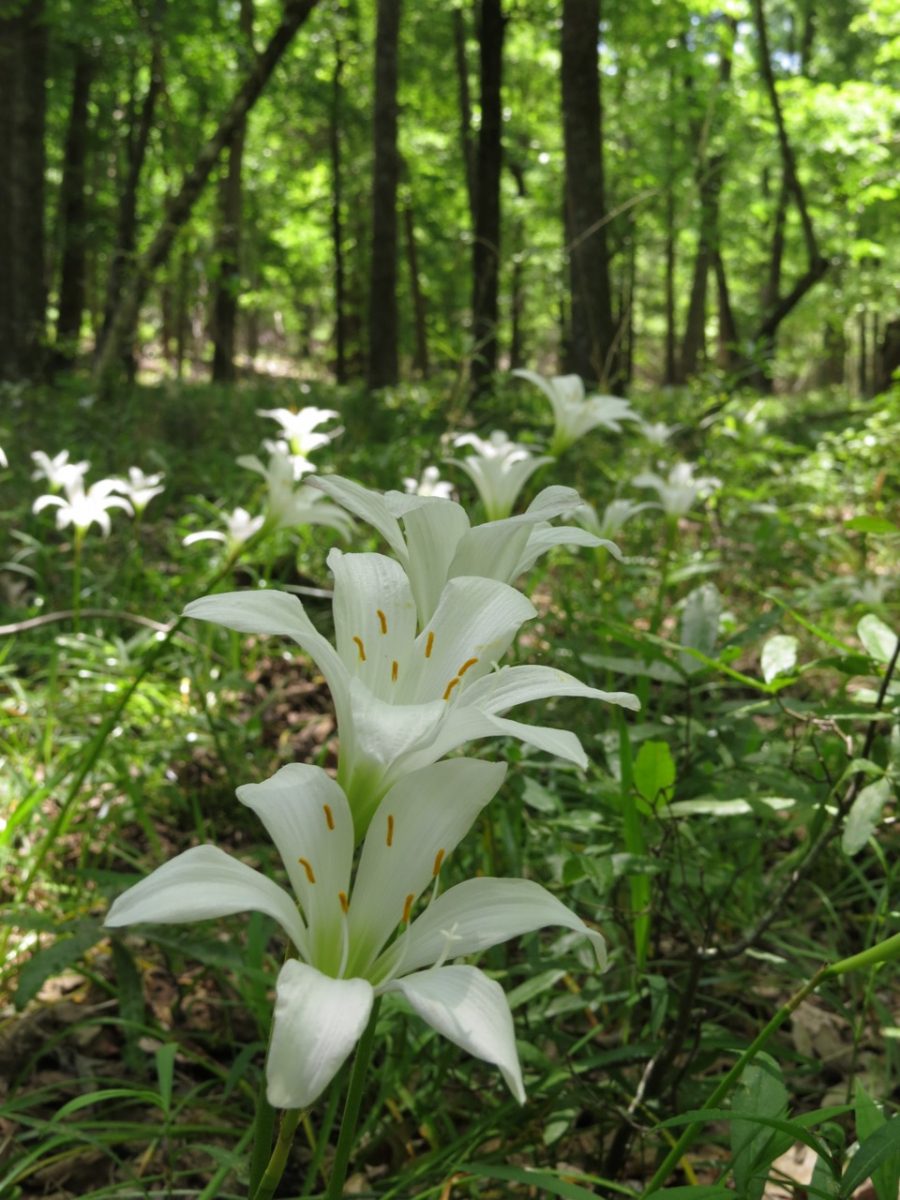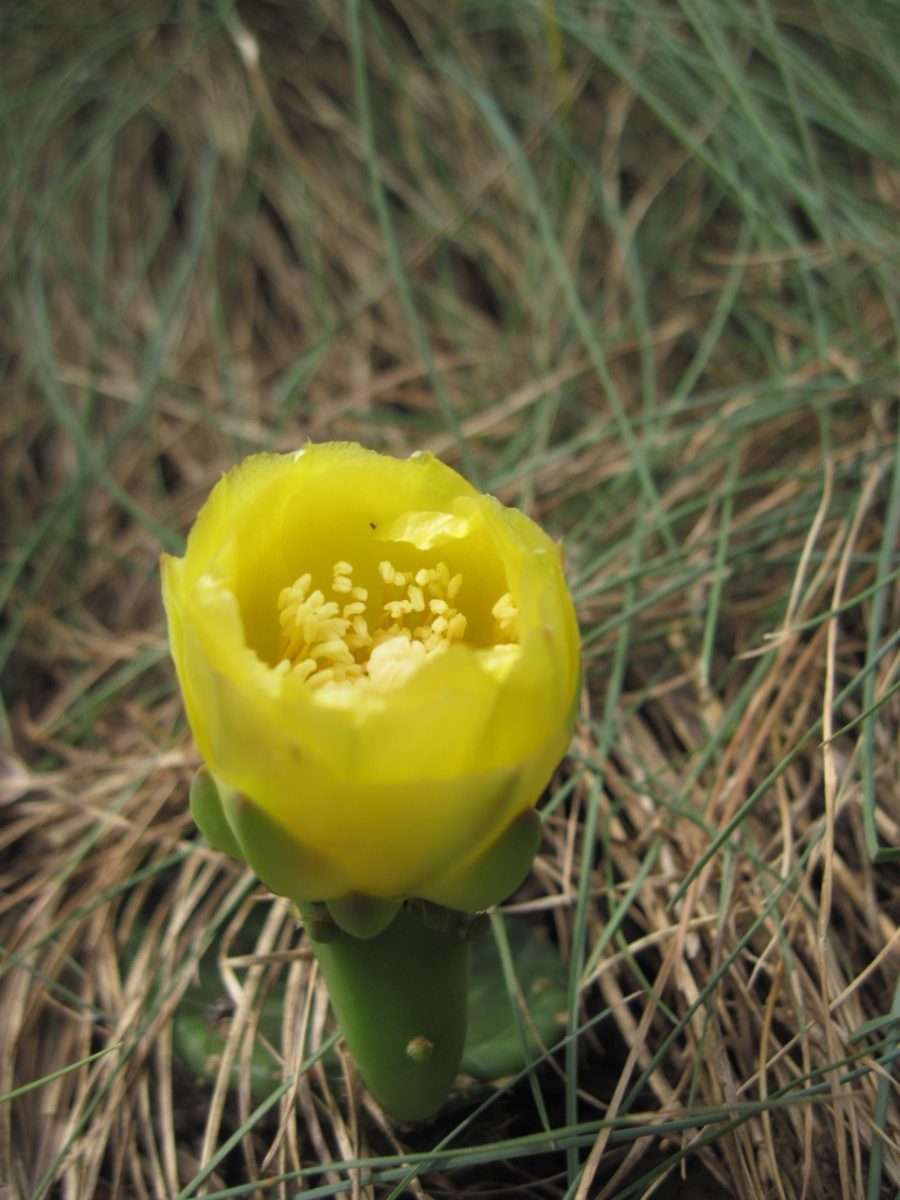Here are the five best springtime Uwharries hikes

Cold and wintry weather have (finally) settled in, but spring will be upon us before you know it.
In honor of the soon-to-be warmer weather, here are some of my favorite hikes for springtime in the Uwharries, east of Charlotte. There are lots of great places there to hike any time of year, but these five trails are particularly nice from March to June, because of the flora and fauna that show up when winter gives way to springtime.

Atamasco lilies. Photo: Crystal Cockman
The Robbins Branch Trail in the Birkhead Mountains Wilderness area winds around and crosses over Robbins Branch a number of times. Trout lilies, with their speckled leaves and nodding yellow flowers, abound in great number. These are among the very first wildflowers to bloom, so you’ll have to go early in the spring if you want to see them. Bluets, Carolina spring beauties, green-and-golds and a variety of other great wildflowers can be spotted along the section of trail that follows the stream.
Another great place to go in the spring is the Badin Upland Pools. At the right time of year, this wonderland is full of white atamasco lilies blooming by the hundreds. You’ll also see and hear the many amphibian species that call this unique habitat home – everything from spotted and marbled salamanders to cricket frogs and even spadefoot toads have been seen here. There’s no formal trail here: you just pull off the side of Moccasin Creek Road and hike up the mountain. But if you inquire at the US Forest Service office in Troy, they can send you in the right direction.
Yet another neat spot to hike in the springtime is the section of the Uwharrie Trail that heads south from Jumping Off Rock. Dwarf iris, Catsby’s trillium and foamflower (also known as Tiarella) can all be seen within a short distance from the trailhead, all in bloom at the same time. Go a little later, early June, and you can catch the mountain camellia in bloom. A little later still, and the galax found here will bloom with its white stalk flowers and skunky aroma.
Another trail is on Three Rivers Land Trust-owned land. It’s not generally open to the public, but we lead a hike each spring, and you can call and inquire for permission to visit. This is at the Low Water Bridge, following the Uwharrie River from the parking area to Crow Creek (it’s an out-and-back trail, so you reach the creek and then turn around and go back the way you came). But this is a spectacular trail in springtime, with a cornucopia of migratory birds using this special, forested riparian area.

Prickly pear. Photo: Crystal Cockman
You can expect to see prothonotary warblers, hooded warblers, black and white warblers, scarlet tanagers, summer tanagers, Louisiana waterthrush, acadian flycatchers and many more species. There are also lots of great plants in bloom, including dwarf larkspur, mountain laurel, bellwort, toad trillium, jack-in-the-pulpit and many more. For more information on this site and our annual birding hike here, email me at crystal@threeriverslandtrust.org.
The last stretch of trail I’ll recommend for a springtime jaunt is the stretch of the Uwharrie Trail that goes over Little Long Mountain. Start at Jumping Off Rock and go as far as the top of Little Long Mountain, or further if you have time. This mountain has panoramic views, even with leaves on the trees. This is thanks in part to the grassy bald and unique glade communities found here.
Two plants that bloom in springtime inhabit these special glade areas: phemeranthus (fameflower), with its bright pink bloom, and prickly pear, with its dazzling yellow flower. Both of these plants are succulents that have to retain water in the shallow-soiled environment in which they live. You’ll also spot pink bee balm in bloom on this stretch just past the trail shelter. If you continue on past the mountain to Poison Fork Creek, you can spot some of the same flowers already mentioned, such as trout lily and spring beauties.
Crystal Cockman is director of conservation at Three Rivers Land Trust.